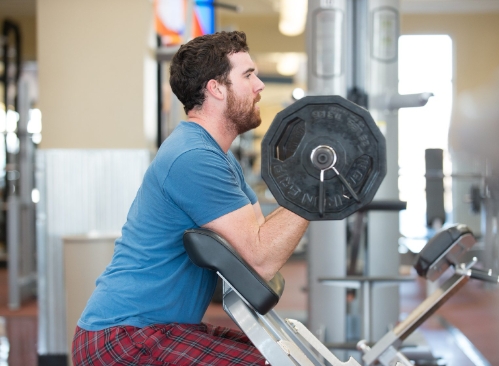When it comes to fitness, many people focus on a single aspect, whether it’s strength training, cardio, or flexibility. While each of these elements offers its own benefits, a truly effective fitness routine is one that incorporates a variety of exercises. A well-rounded fitness routine is not only more engaging, but it also helps improve overall health, performance, and longevity by targeting different aspects of physical fitness. Incorporating strength, cardio, flexibility, and balance exercises into your weekly plan ensures that you’re building a resilient, functional body that can handle a variety of challenges.
One of the key benefits of a well-rounded fitness routine is the improvement in overall strength. Strength training is essential for building muscle, boosting metabolism, and supporting bone health. However, combining strength exercises with cardiovascular activity like running, cycling, or swimming ensures that your heart and lungs remain strong as well. Cardiovascular exercise increases endurance, improves heart health, and enhances your body’s ability to burn fat. When you combine the two, you create a balanced workout routine that helps you become stronger and more physically capable.
In addition to strength and cardiovascular fitness, flexibility is another important component of a well-rounded routine. Stretching exercises or practices like yoga improve the range of motion of your muscles and joints, which can help prevent injuries and improve posture. Flexibility training also supports relaxation and mental well-being, reducing stress and enhancing mobility. Regularly incorporating flexibility exercises into your routine will keep your muscles long, strong, and flexible, while also boosting your ability to perform other exercises more effectively.
Balance exercises are often overlooked but are just as important for maintaining overall fitness. As we age, our balance tends to decline, leading to an increased risk of falls and injuries. Balance training, which can include simple exercises like standing on one leg or more dynamic movements like stability ball exercises, strengthens the muscles responsible for stabilizing your body. Improving balance not only enhances your physical performance in activities like sports or weightlifting, but it also contributes to better coordination and injury prevention in everyday life.
A well-rounded fitness routine can also help prevent the monotony that sometimes comes with focusing on a single type of exercise. Mixing up your workouts keeps things fresh and exciting, which can help you stay motivated and committed to your fitness goals. Trying new activities—like alternating between cycling, swimming, yoga, and strength training—keeps you engaged and challenges your body in different ways. This variety can also prevent overuse injuries, which can occur when you repeat the same movements too frequently without rest or variation.
Furthermore, a diverse fitness routine promotes greater overall health. Each element—strength, cardio, flexibility, and balance—supports different aspects of your body, from the muscles and joints to the cardiovascular system and nervous system. Strength training helps protect your bones and joints, while cardio improves heart health and lung capacity. Flexibility exercises can reduce muscle stiffness and enhance mobility, and balance training can reduce the risk of falls and improve functional movement.
A well-rounded fitness routine is also highly effective for weight management. While cardio exercises are excellent for burning calories and fat, strength training plays a key role in boosting metabolism and increasing muscle mass. Muscle tissue burns more calories at rest than fat tissue, so having more muscle can help you maintain a healthy weight. A combination of both strength and cardio ensures that you’re not only burning fat during exercise but also increasing your muscle mass to support long-term fat loss.
For optimal results, aim for a balanced fitness routine that includes a variety of exercises spread throughout the week. This can include strength training sessions two to three times per week, cardiovascular exercise (like walking, jogging, or cycling) for at least 150 minutes per week, and flexibility and balance exercises integrated into your daily activities. Consider activities like yoga, Pilates, or dance, which combine several elements of fitness into one workout.
Remember that rest and recovery are essential as well. Overloading your body with intense workouts without allowing for proper rest can lead to burnout or injury. Be sure to schedule rest days or incorporate lighter recovery days into your routine to allow your muscles and joints time to repair and rebuild.
In conclusion, a well-rounded fitness routine is key to achieving optimal health and fitness. By incorporating strength training, cardiovascular exercise, flexibility, and balance work into your weekly schedule, you’ll improve not only your physical performance but also your mental well-being and long-term health. A balanced approach to fitness helps you build a stronger, more resilient body that can handle anything life throws your way.





